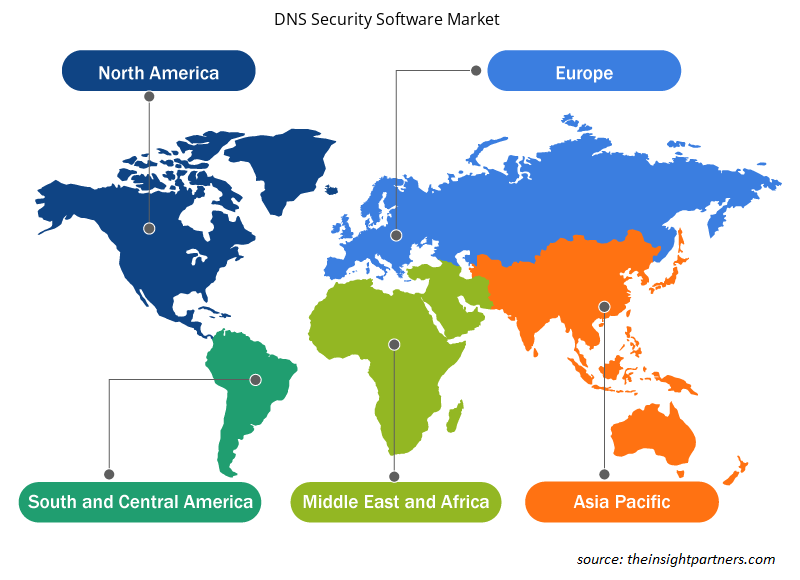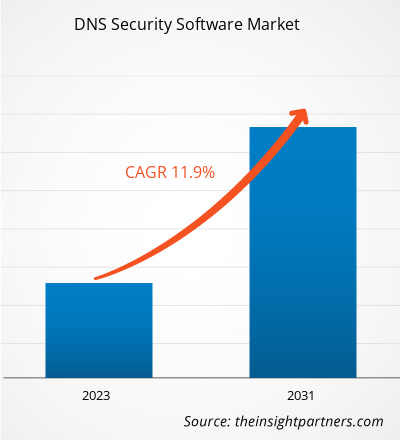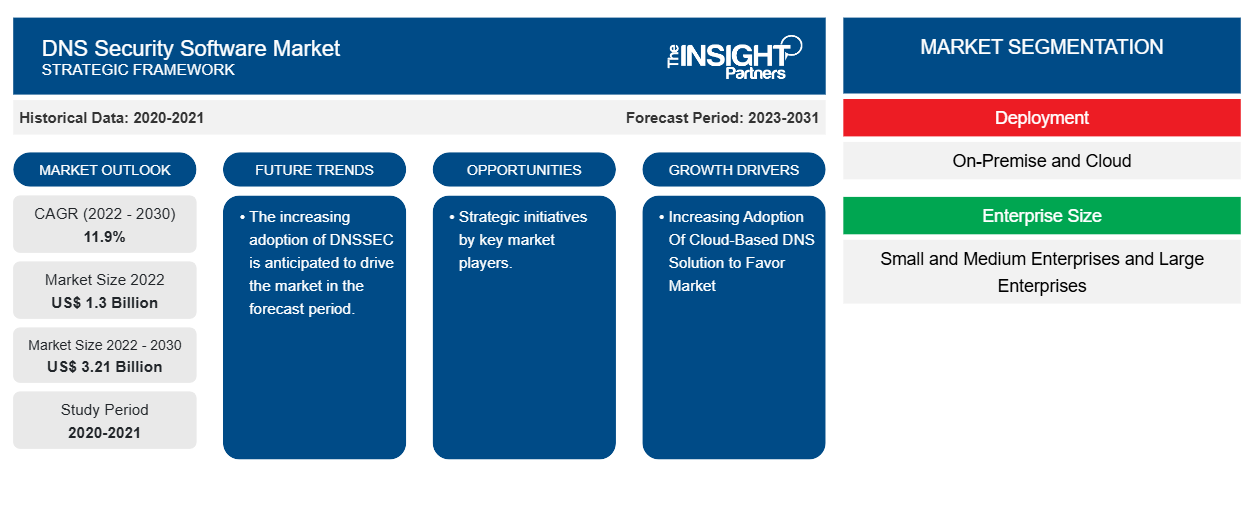DNS 安全软件市场规模预计将从 2022 年的 13 亿美元增至 2030 年的 32.1 亿美元。预计 2022-2030 年期间市场复合年增长率将达到 11.9%。基于 DNS 的攻击数量不断增加以及基于云的 DNS 解决方案的采用率不断上升,很可能仍是市场的主要趋势和驱动因素。
DNS安全软件市场分析
随着域名系统攻击数量的增加、基于云的 DNS 解决方案的采用率不断提高以及全面网络安全政策的实施推动 DNS 安全软件市场的发展,预计DNS 安全软件市场的需求将增长。此外,预计主要市场参与者实施的混合工作方式和战略举措将在未来几年推动市场增长。
DNS 安全软件市场概览
域名系统 (DNS) 安全代表保护 DNS 基础设施免受网络攻击的技术。它确保 DNS 基础设施高效可靠地运行。这需要建立冗余 DNS 服务器,利用域名系统安全扩展 (DNSSEC) 等安全技术,并强制执行严格的 DNS 日志记录。DNS 是域名及其关联 IP 地址的集合。它通常与电话簿形成对比,电话簿将人们的姓名与他们的电话号码联系起来。同样,DNS 确认浏览器知道,当用户在 URL 栏中输入 cnn.com 时,他们会被发送到新闻公司的 IP 地址。
定制此报告以满足您的需求
您可以免费定制任何报告,包括本报告的部分内容、国家级分析、Excel 数据包,以及为初创企业和大学提供优惠和折扣
-
获取此报告的关键市场趋势。这个免费样品将包括数据分析,从市场趋势到估计和预测。
DNS 安全软件市场驱动因素和机遇
越来越多人采用基于云的 DNS 解决方案以利于市场
最完整的 DNS 安全保护解决方案易于实施,完全通过云端实现,无需新硬件或软件。阻止 95% 的威胁并满足法规遵从性要求。此外,云 DNS 使用任播为来自全球多个位置的托管区域提供服务,以实现高可用性。请求会自动路由到最近的位置,从而减少延迟并提高用户的权威名称查找性能。基于云的 DNS 解决方案具有多种优势,例如专用的 DNS 设计和管理资源、全球性能和可扩展性、高可用性、强大的安全性、易于使用的 API 等。因此,基于云的 DNS 解决方案的日益普及正在推动 DNS 安全软件市场的增长。
主要市场参与者的战略举措。
预计主要市场参与者的战略举措将在未来几年推动市场发展。战略举措包括合作、并购等。例如,印度最大的 IT 安全分销商之一 BD Software 加强了其网络产品组合,将美国的 Safe DNS、基于云的网络过滤解决方案引入印度市场。考虑到 Covid-19 期间和之后网络空间的威胁不断增加,Safe DNS 的解决方案将有助于保护印度消费者/企业免受网络威胁和攻击以及互联网上的不良内容。因此,主要市场参与者的战略举措正在推动市场增长。
DNS 安全软件市场报告细分分析
有助于得出 DNS 安全软件市场分析的关键部分是部署和企业规模。
- 根据部署方式,DNS 安全软件市场分为本地部署和云部署。预计本地部署将在预测期内占据相当大的市场份额。
- 根据企业规模,市场分为中小型企业和大型企业。预计中小型企业在预测期内将占据相当大的市场份额。
DNS 安全软件市场份额(按地区)分析
DNS安全软件市场报告的地理范围主要分为五个区域:北美、亚太地区、欧洲、中东和非洲、南美和中美。
北美占据了市场主导地位。北美包括美国、加拿大和墨西哥等国家。由于识别和阻止高风险流量等因素,该地区正在经历显着增长,而使用基于云的DNS安全解决方案提供的好处正在影响该地区的增长。此外,对研发的高度重视正在推动北美的技术发展。此外,北美还有几家软件提供商。因此,考虑到上述参数,市场在北美正在获得关注。
DNS 安全软件市场区域洞察
Insight Partners 的分析师已详尽解释了预测期内影响 DNS 安全软件市场的区域趋势和因素。本节还讨论了北美、欧洲、亚太地区、中东和非洲以及南美和中美洲的 DNS 安全软件市场细分和地理位置。

- 获取 DNS 安全软件市场的区域特定数据
DNS 安全软件市场报告范围
| 报告属性 | 细节 |
|---|---|
| 2022 年市场规模 | 13亿美元 |
| 2030 年的市场规模 | 32.1亿美元 |
| 全球复合年增长率(2022 - 2030 年) | 11.9% |
| 史料 | 2020-2021 |
| 预测期 | 2023-2031 |
| 涵盖的领域 |
按部署
|
| 覆盖地区和国家 |
北美
|
| 市场领导者和主要公司简介 |
|
DNS 安全软件市场参与者密度:了解其对业务动态的影响
DNS 安全软件市场正在快速增长,这得益于最终用户需求的不断增长,而这些需求又源于消费者偏好的不断变化、技术进步以及对产品优势的认识不断提高等因素。随着需求的增加,企业正在扩大其产品范围,进行创新以满足消费者的需求,并利用新兴趋势,从而进一步推动市场增长。
市场参与者密度是指在特定市场或行业内运营的企业或公司的分布情况。它表明在给定市场空间中,相对于其规模或总市场价值,有多少竞争对手(市场参与者)存在。
在 DNS 安全软件市场运营的主要公司有:
- Akamai技术公司
- Comodo 安全解决方案
- 公司
- DNSFilter 公司
- 域名工具
- 高效知识产权
免责声明:上面列出的公司没有按照任何特定顺序排列。

- 获取 DNS 安全软件市场顶级关键参与者概览
DNS 安全软件市场新闻和最新发展
DNS 安全软件市场通过收集主要和次要研究后的定性和定量数据进行评估,其中包括重要的公司出版物、协会数据和数据库。DNS 安全软件市场的一些发展如下所列:
- 经过公平竞争的招标程序,国家网络安全中心 (NCSC) 宣布了其保护性域名系统 (PDNS) 服务交付方面的合作伙伴关系变更。Cloudflare Inc. 获得了一份为期三年的合同,这家连接云公司将从 2024 年 9 月起与服务提供商埃森哲合作实施 NCSC 的 PDNS 服务。(来源:国家网络安全中心,新闻稿,2024 年 4 月)
- Sophos 宣布推出 Sophos DNS Protection 网络早期访问计划 (EAP)。这项新的基于云的服务是其不断增长的安全访问服务边缘产品和服务套件的一部分,扩展了我们最初推出的 Sophos ZTNA 和 Sophos SD-WAN Orchestration。(来源:Sophos,公司网站,2024 年 4 月)
DNS 安全软件市场报告覆盖范围和交付成果
“DNS 安全软件市场规模和预测(2020-2030 年)”报告对市场进行了详细的分析,涵盖以下领域:
- 范围内涵盖的所有主要细分市场的全球、区域和国家层面的 DNS 安全软件市场规模和预测
- DNS 安全软件市场趋势以及市场动态,如驱动因素、限制因素和关键机遇
- 详细的 PEST/波特五力分析和 SWOT 分析
- DNS 安全软件市场分析涵盖主要市场趋势、全球和区域框架、主要参与者、法规和最新市场发展
- 行业格局和竞争分析,涵盖市场集中度、热图分析、知名参与者以及 DNS 安全软件市场的最新发展
- 详细的公司简介
- 历史分析(2 年)、基准年、预测(7 年)及复合年增长率
- PEST和SWOT分析
- 市场规模、价值/数量 - 全球、区域、国家
- 行业和竞争格局
- Excel 数据集
近期报告
相关报告
客户评价
购买理由
- 明智的决策
- 了解市场动态
- 竞争分析
- 客户洞察
- 市场预测
- 风险规避
- 战略规划
- 投资论证
- 识别新兴市场
- 优化营销策略
- 提升运营效率
- 顺应监管趋势























 获取免费样品 - DNS安全软件市场
获取免费样品 - DNS安全软件市场